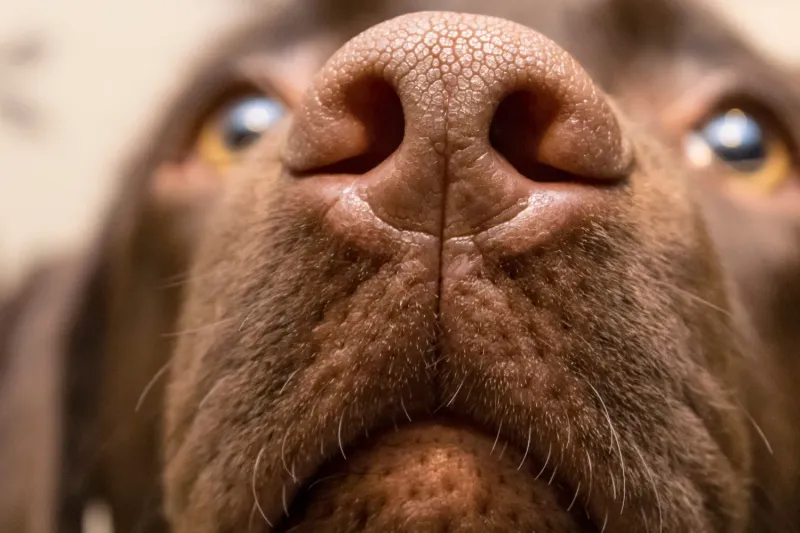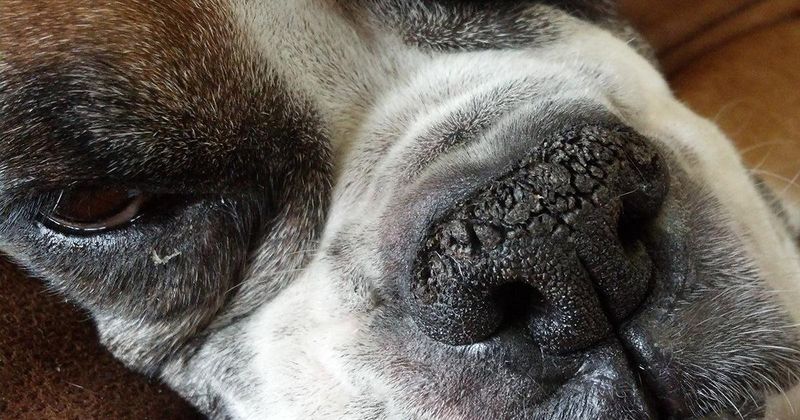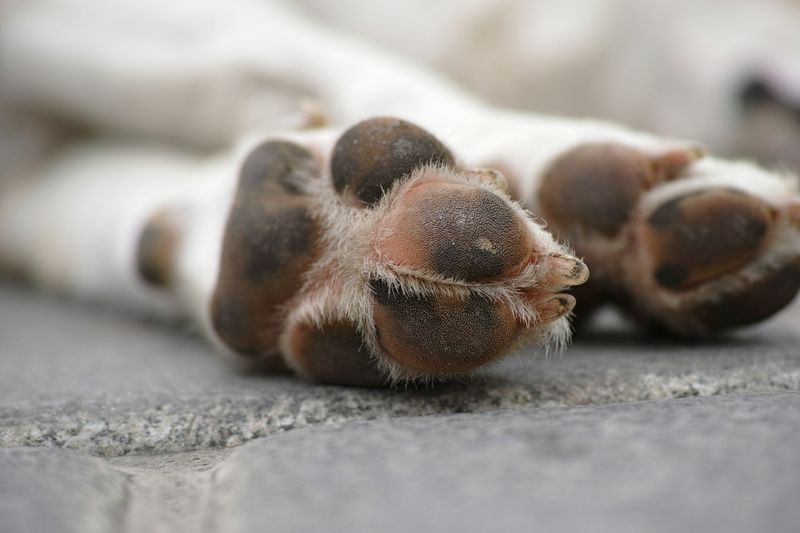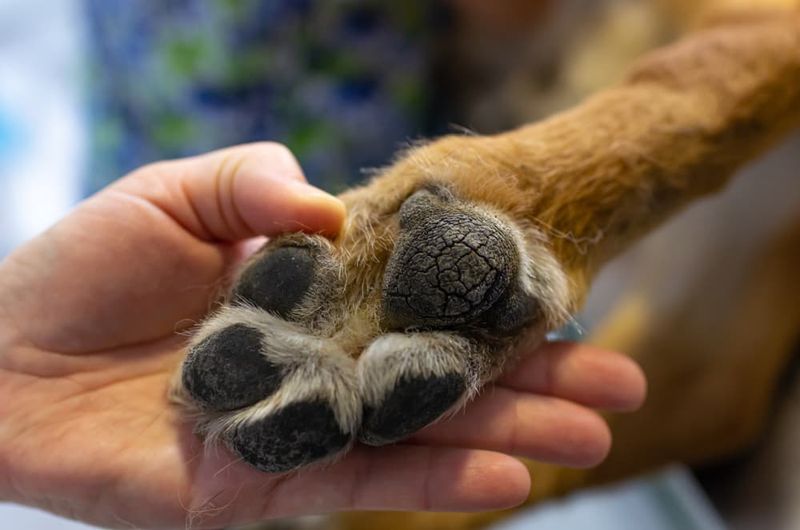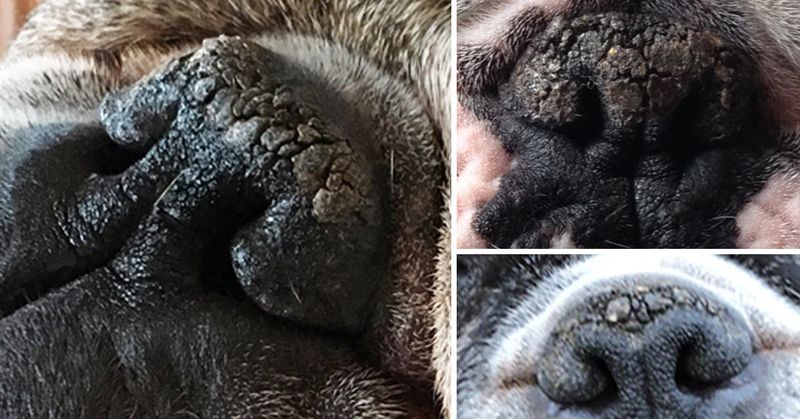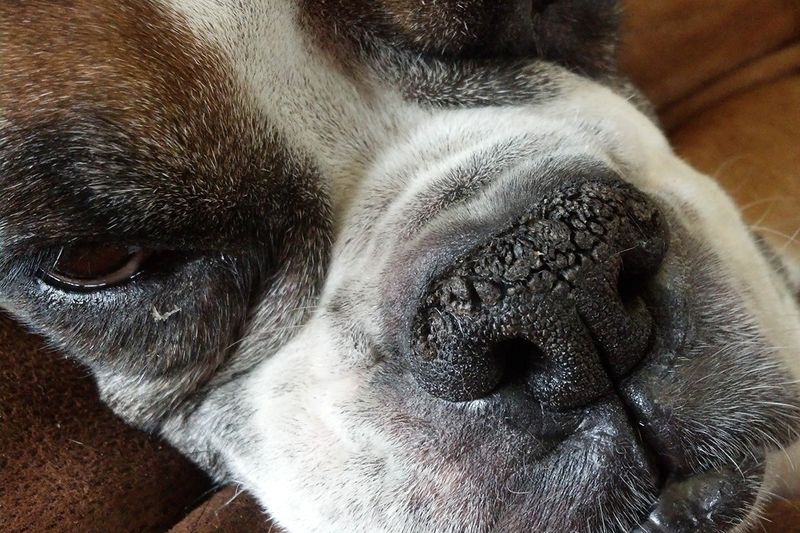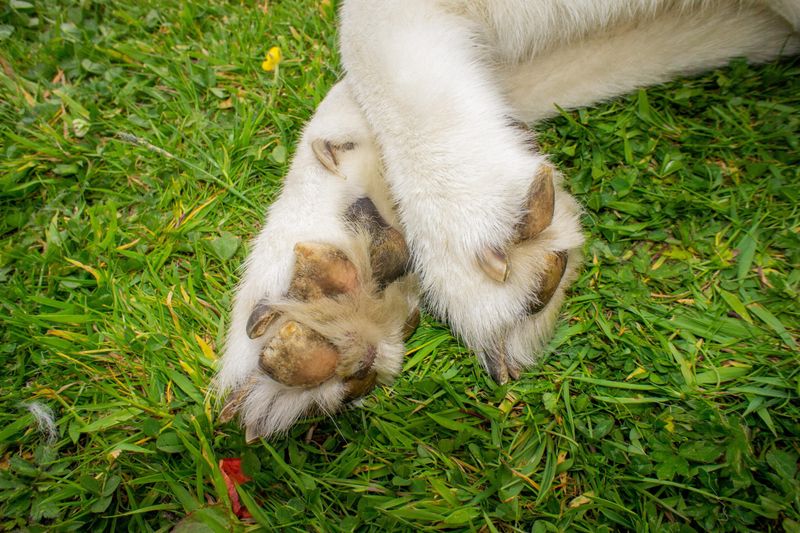Hyperkeratosis in dogs is a skin condition characterized by thickened skin, primarily affecting the nose and paw pads. It’s often due to an overproduction of keratin, the protein that forms the outer layer of skin. Understanding the signs can lead to early detection and treatment, ensuring your dog’s comfort and health. In this blog post, we’ll explore nine distinct signs of hyperkeratosis, delve into its causes, and discuss effective treatment options. Whether you’re a new pet owner or a seasoned dog lover, this guide aims to provide comprehensive insights into managing this common canine condition.
Crusty Paw Pads
Imagine your dog’s walk turning into a painful hobble due to crusty paws. Hyperkeratosis often manifests as thick, crusty skin on the paw pads. This texture change can lead to discomfort, especially on hard surfaces. In severe cases, the crusts crack, causing pain and possible infection. Regular moisturizing can alleviate some symptoms. Veterinarians might recommend balms specifically designed for a dog’s paws. Keeping the paws clean and inspecting them regularly is crucial. Ensuring your furry friend’s paws remain soft can help maintain their playful spirit and active lifestyle.
Thickened Nose
The nose, a dog’s sensory powerhouse, can tell tales of hyperkeratosis through thickened, crusty skin. Dogs rely on their noses for more than just sniffing; it’s their guide. When hyperkeratosis strikes, the nose may become rough and dry. This change can affect a dog’s sense of smell, impacting their day-to-day activities. Regular applications of nose balm can provide relief. Keeping their nose moist ensures they continue exploring with enthusiasm. A healthy nose is essential for a dog’s happiness and well-being, making it important to monitor and treat any abnormalities.
Discolored Skin
Discoloration might not be the first thing you notice, but it’s a subtle indicator of hyperkeratosis. The skin may turn darker or lighter, often accompanied by a rough texture. This change can be concerning for owners who are used to their dog’s natural hues. Discoloration usually points to an underlying issue, urging a closer look at their health. Consulting a vet is advisable to understand the root cause. Treatment might include medicated shampoos or topical applications. Addressing discoloration early can prevent more serious complications down the line.
Rough Skin Texture
Running your hand over your dog’s fur, there’s an unexpected roughness beneath. Hyperkeratosis often presents as a rough skin texture. This tactile change can surprise owners, especially if their pet’s skin was previously smooth. Rough skin can lead to discomfort and itching, causing dogs to scratch or lick excessively. Soothing creams can alleviate these symptoms, while proper hydration supports skin health. Regular grooming and touching are opportunities to spot these changes early. A proactive approach ensures your companion remains itch-free and comfortable.
Frequent Licking
Licking is a dog’s way of soothing discomfort. When hyperkeratosis strikes, you might notice your pet licking their paws or nose more frequently. This behavior often indicates underlying irritation or pain. The cycle of licking can exacerbate the problem, leading to sores or infections if left unchecked. Addressing the root cause with proper treatments is essential. Behavioral changes like this are key indicators of your pet’s health. Observing and acting on such changes keeps your dog from unnecessary distress, ensuring their quality of life remains high.
Limping or Lameness
Seeing your dog limp can tug at your heartstrings. Hyperkeratosis can cause limping or lameness, primarily if the condition affects their paw pads. The thickened skin can become painful, making walking difficult. Observing your dog’s movements can provide insights into their discomfort levels. Timely intervention with proper care and treatment can restore mobility. Regular vet visits help in diagnosing and managing such conditions effectively. Ensuring your pet’s comfort means they continue to enjoy their daily adventures without hindrance.
Dry Cracks and Fissures
Hyperkeratosis can lead to dry cracks and fissures on a dog’s paws or nose. These openings can become painful and prone to infections if not treated promptly. The dry skin often lacks elasticity, making it brittle and susceptible to damage. Moisturizing balms can offer relief and protection. Regular checks help in identifying such cracks early, preventing complications. Maintaining paw and nose health is part of a broader strategy to ensure your dog’s overall well-being. The goal is to keep these areas supple and healthy, sidestepping potential issues.
Excessive Scratching
Excessive scratching might be your dog’s way of communicating discomfort. Hyperkeratosis can make the skin itchy, leading to persistent scratching. While scratching provides temporary relief, it can also cause further irritation or wounds. Monitoring your dog’s scratching habits is vital. If it becomes frequent, consulting a vet can help determine the cause. Treatments can include topical solutions or dietary changes to improve skin health. Preventing excessive scratching ensures your dog remains comfortable and minimizes the risk of skin infections.
Painful Sensitivity
A gentle touch should be comforting, yet some dogs flinch due to painful sensitivity from hyperkeratosis. This heightened sensitivity typically signals discomfort, especially if the feet or nose are affected. Dogs may pull away or show reluctance to being touched. Recognizing these signs is crucial for managing their pain. Consulting a veterinarian for a thorough examination and tailored treatment plan is recommended. Pain management strategies, including medicated balms or oral medications, can substantially improve their quality of life. A pain-free dog is a happy dog.
Loss of Appetite
A dog’s appetite often reflects its health. Hyperkeratosis might lead to a loss of appetite if discomfort becomes overwhelming. This could be due to the pain or stress associated with their condition. A noticeable decrease in eating habits warrants attention. Veterinary assistance can help determine if hyperkeratosis is the culprit. Treatment plans might involve pain relief or skin condition management. Ensuring your dog eats well is fundamental to their recovery and overall health. A nourished dog is better equipped to handle and recover from health challenges.
Secondary Infections
Secondary infections can develop if hyperkeratosis is left untreated. The thickened skin and cracks can become breeding grounds for bacteria. These infections might present as redness, swelling, or pus. Addressing them requires prompt veterinary care to avoid complications. Regular cleaning and monitoring are essential preventive measures. Maintaining hygiene and addressing the primary hyperkeratosis condition can significantly reduce infection risks. Proactive healthcare keeps your dog thriving and free from discomfort. A healthy pet is a happy companion, enriching your life with their presence.


